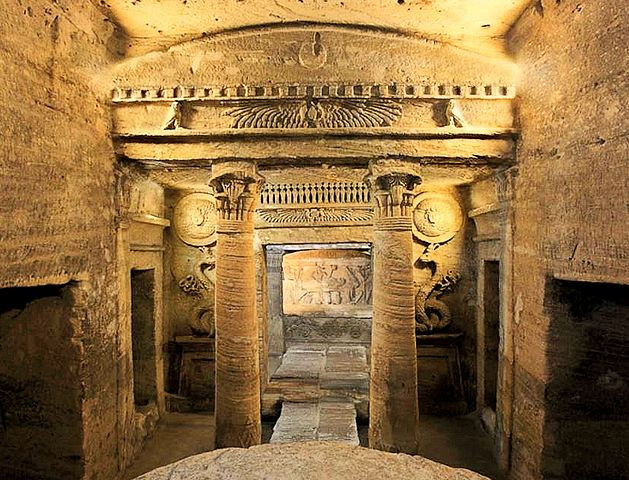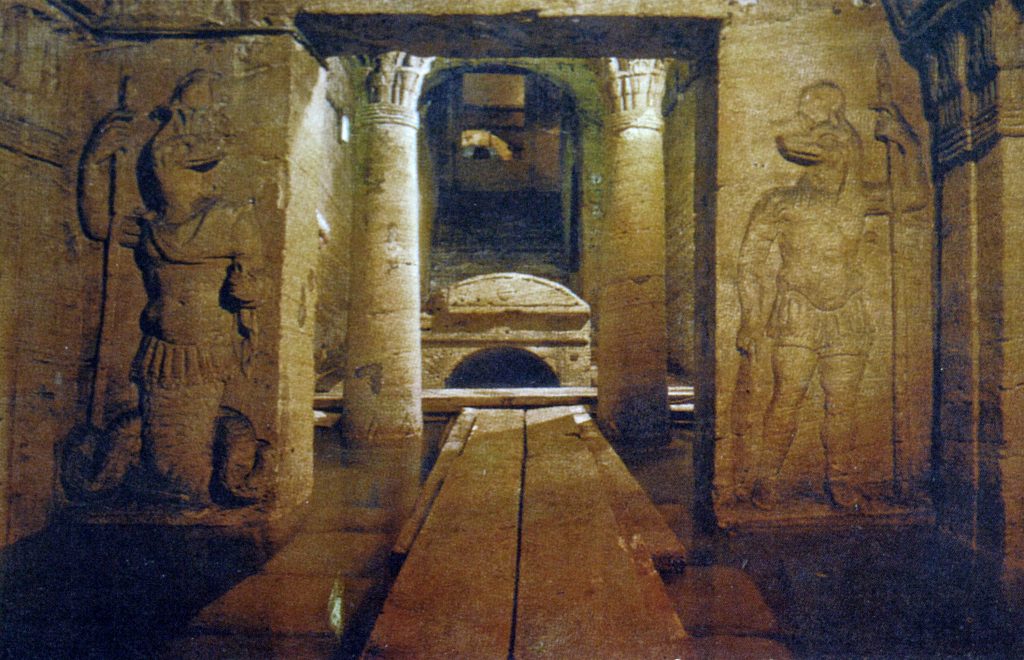Unveiling the Mysteries of Kom El Shoqafa: Alexandria’s Subterranean Marvel
Nestled beneath the vibrant streets of Alexandria lies a hidden gem that seamlessly intertwines the rich tapestries of Egyptian, Greek, and Roman cultures—the Catacombs of Kom El Shoqafa. Recognized as one of the Seven Wonders of the Middle Ages, this necropolis offers a captivating journey through time, revealing the confluence of ancient civilizations in a single, awe-inspiring location.

Constructed in the 2nd century CE, the Catacombs of Kom El Shoqafa were initially intended as a private family tomb for a wealthy Alexandrian family. Over time, the site expanded to accommodate numerous burials, reflecting the city’s diverse cultural influences. The architecture and art within the catacombs exhibit a unique blend of Egyptian, Hellenistic, and early Imperial Roman styles. Visitors can observe Egyptian-style statues adorned with Roman attire and hairstyles, symbolizing the harmonious coexistence of these ancient cultures.

The catacombs comprise three levels hewn into solid rock, with the lowest level historically submerged underwater. A spiral staircase, once used to lower bodies into the tombs, guides visitors through the subterranean complex. The main burial chamber features a temple-like façade adorned with columns topped by papyrus, lotus, and acanthus leaves, supporting an architrave with a relief of a winged sun-disk flanked by Horus falcons. This intricate design exemplifies the syncretism of Egyptian and Greco-Roman artistic elements.
One of the most intriguing sections of the catacombs is the Hall of Caracalla, named after the Roman Emperor Caracalla. This chamber contains the bones of horses, believed to be interred in 215 CE, possibly as a tribute to the emperor’s beloved steeds. The presence of both human and animal remains in this hall adds another layer of mystery to the site’s history.
No results found.